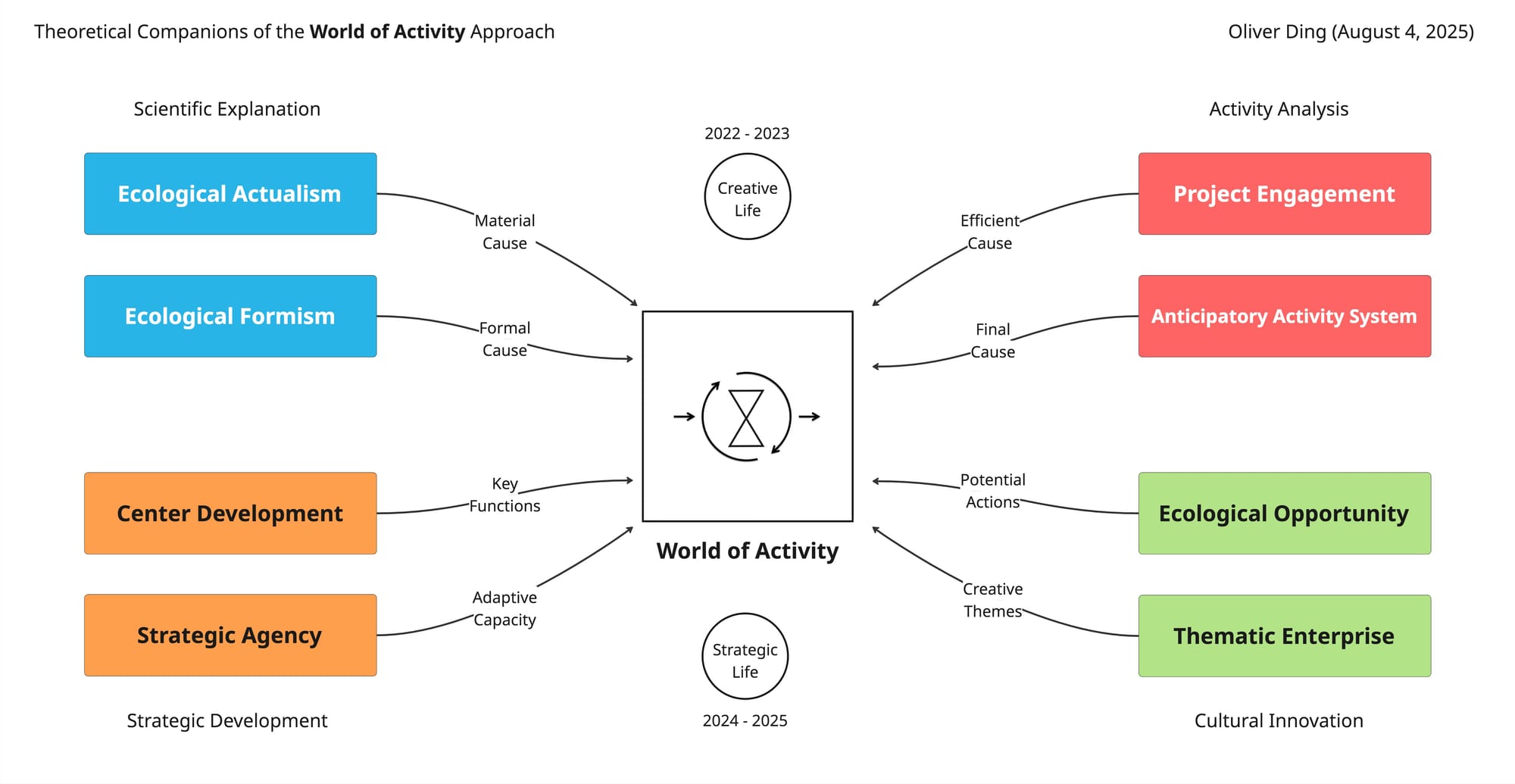Circle

The Context of the Activity Analysis Center
by Oliver Ding
In a recent case study, I used the diagram below to represent the context of the Activity Analysis Center.

More details can be found in [Wonder and Wander] The Center Journey (2022–2025, Part B).
The "Activity Theory" Community
In February 2025, I edited a book draft titled Castle and Forest: The Landscape of Concept-related Knowledge Engagement (book, v2.0, 2025). In the book, I defined four types of actors involved in concept-related activities, using the THEORY — PRACTICE — END — MEANS schema to structure them:
- THEORY: This area includes Theorists who focus on theoretical innovation, such as Andy Blunden. Their primary concern is developing and refining conceptual frameworks.
- END: This area includes Empirical Researchers who apply theories to empirical studies. They may also critique or refine existing theories based on new insights.
- MEANS: This area includes Professionals outside academia who are not deeply engaged with theory but seek to shift perspectives by integrating theoretical ideas into their work.
- PRACTICE: This area includes General Actors who engage with concepts primarily for personal development. For example, I explored Activity Theory as a way to develop my own thinking.
These categories represented ideal types — in reality, individuals could move between these areas over time, depending on their interests and professional focus. In 2023, my focus moved to the “MEANS” area.
I used the THEORY — PRACTICE — END — MEANS schema to represent several terms related to “Activity Theory” in our discussion. See the diagram below.

From this perspective, the boundary of the Activity Theory community is not fixed. It shifts depending on how one defines the field’s scope. As such, the alignment of identity between the Activity Analysis Center and the Activity Theory community is a dynamic, evolving relationship — shaped by conceptual positioning, practical needs, and the larger ecosystem of knowledge.
A Network of Knowledge Centers
In the past several years, I worked on building a network of knowledge centers. The Activity Analysis Center is a member of this network. In 2023, the network was named the Curativity Center's Value Circle.

Since 2019, I have managed my knowledge enterprises through the “Knowledge Center” approach.
- 2019 to 2022: CALL served as an incubator, giving rise to five knowledge centers. The Curativity Center emerged from this phase.
- June 2, 2022: CALL and Curativity Center switched roles, with Curativity Center becoming a meta-center focused on building a network of knowledge centers.
In 2023, I expanded my knowledge enterprises from Knowledge Curation to Knowledge Creation, with “Knowledge Engagement” becoming the primary theme.

To run the network effectively, I set a guideline: each knowledge center would host only one major knowledge enterprise. However, as Curativity Center was dedicated specifically to Curativity Theory, it became clear that it might not be ideal as the overarching meta-center.
"World of Activity" as a New Hub
In August 2025, I used the diagram below to represent the context of the World of Activity approach. It connects several theoretical frameworks as a meaningful whole.

Thus, the future of the Activity Analysis Center will adopt this landscape and use the World of Activity approach as the primary hub to support other knowledge centers.
This means the Activity Analysis Center will be the meta-center of the network of knowledge centers.
V1.0: 551 words - September 4, 2025
